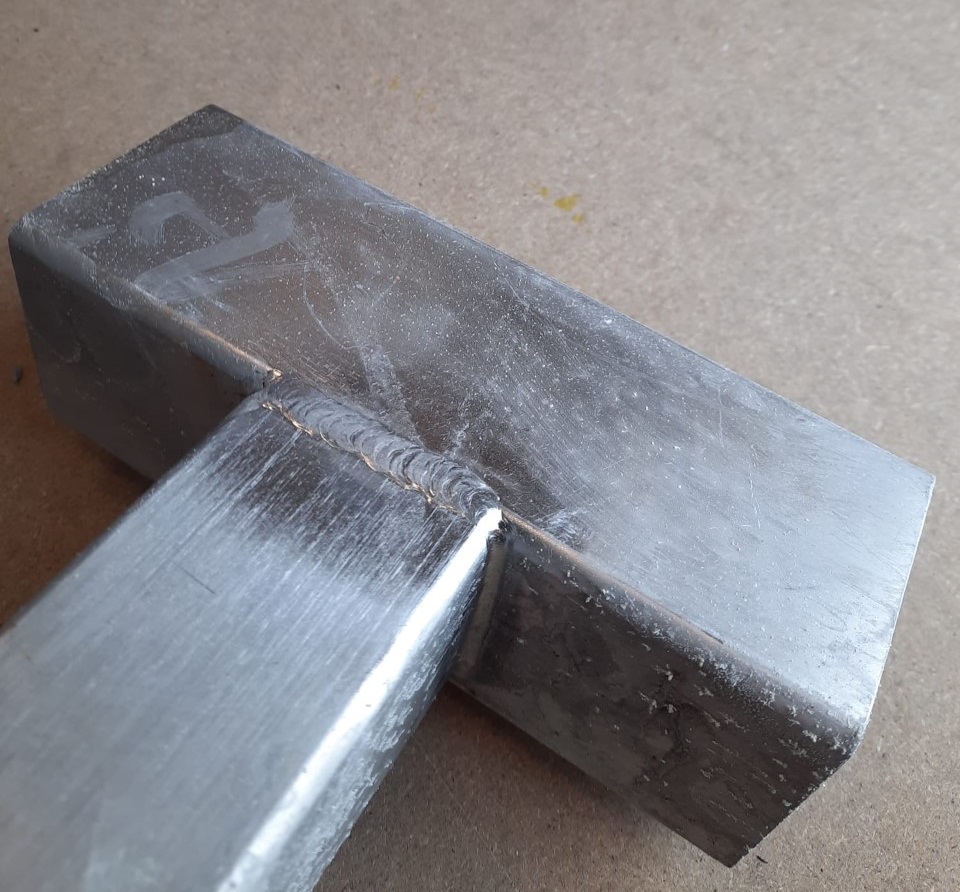Why is it important to neutralize after weld cleaning?
Weld cleaning | Thursday, 21 July 2022
The neutralizing step is often neglected in the weld cleaning process, and some even believe the step to be unnecessary.
But neutralizing is an essential step in the weld cleaning process, and if done properly it will improve the overall finish, and the safety of your process, and eliminate any environmental concerns.
In this article, we’ll guide you through the three main reasons for neutralizing after weld cleaning.
What does neutralizing mean?
The electrochemical weld cleaning process combines a phosphoric acid solution with heat, which removes impurities including oxides and corrosion from stainless steel and other metal surfaces. We recommend using a cloth or paper towel to remove the excess acid from the cleaned item when done weld cleaning.
After that, the neutralizing fluid can preferably be applied with a spray bottle distributing the neutralizer evenly where the acid has been. It’s important that the amount of neutralizer exceeds the amount of weld cleaning fluid for it to be properly neutralized.
What is neutralizing fluid?
Neutralizing fluid is a water-based fluid that does not contain solvents or acids.
The weld cleaning fluid has a low pH-level (like any other acid-based fluids) whereas the neutralizing fluid has a higher pH-level – around 11.
When applying the neutralizer to the area cleaned with weld cleaning fluid, the surface will be neutralized (including any residue acid), meaning that the residue acid and the stainless steel surface will have a pH-level closer to 7, which is neutral on the pH-scale.
3 most important reasons why you should neutralize after weld cleaning
Below we will sum up the three main reasons why you should neutralize after weld cleaning.
1. Avoid white phosphorus crystals forming on the surface
The most obvious reason for neutralizing is that it prevents white phosphorus crystals from forming on stainless steel surfaces after electrochemical weld cleaning. Even though you wipe away the acid after weld cleaning it will most likely leave some residue that will form white phosphorus crystals on the surface 1-2 days later, thus giving the item an unsanitary and messy look.
The white phosphorus crystals are not difficult to remove, and the item can easily be neutralized after the white marks have appeared, but we recommend doing it right after the weld cleaning.

The best way to avoid the white phosphorus crystals forming is to do as follows:
- weld clean as normal using your weld cleaning machine and phosphoric acid-based cleaning fluid
- wipe away the excess weld cleaning fluid with a clean paper towel
- spray the neutralizing fluid generously over the cleaned area and where the acid has been in contact
- wait for a minimum of 30 seconds (preferably 1 minute) for the neutralizer to thoroughly neutralize all acid
- wipe away all excess neutralizer with a new, clean paper towel and ensure the surface is dry
- It is up to you if you then rinse with water for the final step
For a good result, it’s advisable to use more neutralizer rather than less. The amount of neutralizer needs to exceed the amount of weld cleaning fluid to fully prevent the white acid residue from forming.
2. Health and Safety
Even though we argue that our weld cleaning fluids are safe to use, we cannot deny that acid is acid. This means there are some short-term effects that phosphoric-based weld cleaning fluids can cause to human skin – irritation and a rash for example.
The best way to reduce the risk of these effects is to neutralize as soon as possible after weld cleaning – thus rendering the acid less (if not completely) non-corrosive.
So, not only will neutralizing ensure a nicer look for your stainless steel item, but it will also ensure the safety of the weld cleaning operator and the users of the stainless products, which leaves us with the last but not least reason why to neutralize.
3. Environment
Weld cleaning fluid should not be just washed down the drain straight after use because it is acidic and corrosive which, of course, is neither legal nor safe for the environment.
Phosphorus acid must always be disposed of according to local regulations. If neutralized to a pH level between 5,5 and 9,0 then this certainly makes it easier to comply with the regulations. Therefore, if you’re concerned about the hassle of getting rid of the excess fluids, neutralizing will spare you this worry.
Conclusion
Neutralizing after weld cleaning should be an integral part of any weld cleaning process, as it ensures a nice and non-stained result as well as enhances safety for the operator and the environment.
Feel free to contact us for a free demo of our full weld cleaning process, which of course includes neutralizing.
BOOK A DEMO
Loading...
Please wait while the form loads.


 English
English  English (US)
English (US)  German
German  Danish
Danish  Swedish
Swedish  French
French  Polish
Polish  Spanish
Spanish